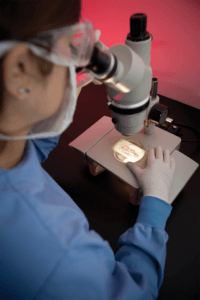Published Research

REFLECT™ Baroncini et al. 2021
Return to sport and daily life activities after vertebral body tethering for AIS: analysis of the sport activity questionnaire
Baroncini et al. Eur Spine J 30(7):1998-2006, 2021.
REFLECT™ Baroncini et al. 2022
The effects of vertebral body tethering on sagittal parameters: evaluations from a 2‑years follow‑up
Baroncini et al. Eur Spine J 31(4):1060-1066, 2022.
REFLECT™ Lavelle et al. 2016
An initial biomechanical investigation of fusionless anterior tether constructs for controlled scoliosis correction
Lavelle et al. Spine J 16(3):408-413, 2016.
REFLECT™ Nicolini et al. 2021
Motion preservation surgery for scoliosis with a vertebral body tethering system: a biomechanical study
Nicolini et al. Eur Spine J 31(4):1013-1021, 2021.
REFLECT™ Trobisch et al. 2023
An investigation of range of motion preservation in fusionless anterior double screw and cord constructs for scoliosis correction
Trobisch et al. Eur Spine J 32(4):1173-1186, 2023.
REVERE® Bartanusz et al. 2015
Short segment spinal instrumentation with index vertebra pedicle screw placement for pathologies involving the anterior and middle vertebral column is as effective as long segment stabilization with cage reconstruction: a biomechanical study
Bartanusz et al. Spine (Phila Pa 1976) 40(22):1729–1736, 2015.
REVERE® Bohl et al. 2015
Undertapping of lumbar pedicle screws can result in tapping with a pitch that differs from that of the screw, which decreases
screw pull-out force
Bohl et al. Spine (Phila Pa 1976) 40(12):E729–E734, 2015.
REVERE® Bolesta et al. 2012
Pedicle screw instrumentation of thoracolumbar burst fractures: biomechanical evaluation of screw configuration with pedicle screws at the level of the fracture
Bolesta et al. Int J Spine Surg 6:200–205, 2012.
REVERE® Gehrchen et al. 2017
Range of motion after thoracolumbar corpectomy: evaluation of analogous constructs with a novel low profile anterior dualrod
system and a traditional dual-rod system
Gehrchen et al. Eur Spine J 26(3):666–670, 2017.
REVERE® Gelb et al. 2021
Comprehensive evaluation of accessory rod position, rod material and diameter, use of cross-connectors, and anterior column support in a pedicle subtraction osteotomy model, part I: effects on apical rod strain: an in vitro and in silico biomechanical study
Gelb et al. Spine (Phila Pa 1976) 46(1):E1-E11, 2021.
REVERE® Jazini et al. 2017
Does lumbopelvic fixation add stability? a cadaveric biomechanical analysis of an unstable pelvic fracture model
Jazini et al. J Orthop Trauma 31(1):37–46, 2017.
REVERE® Jazini et al. 2017
Finding the right fit: studying the biomechanics of under-tapping with varying thread depths and pitches
Jazini et al. Spine J 17(4):574–578, 2017.
